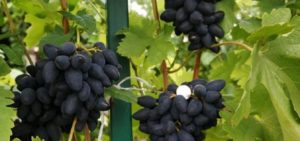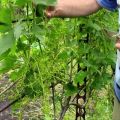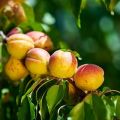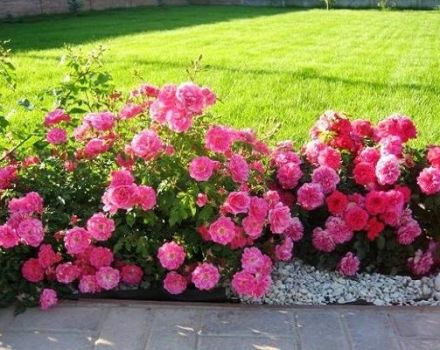Description and characteristics of the Delight grape variety and its varieties, planting and care features
The grapes of the Vostorg variety occupy a leading position in the ratings of the best grape crops, due to the attractive appearance of the bunches, the large size of the berries, the high fruiting rate, excellent taste, unpretentiousness in cultivation and undemanding care. Therefore, this variety often decorates garden plots, as it is recognized by many growers, whose positive reviews fully justify its name.
What is this variety?
The result of the complex breeding work of Russian scientists is the Delight grape variety. His "parents" are Zarya Severa, Russian Early and Dolores. The variety was entered in the State Register in 1992.The Delight grape belongs to the table varieties. Its fruits are good fresh, and are used to make high quality raisins, dry cereals and muesli.
The description of the variety provides for an indication of the pros and cons of the culture, its varieties, recommendations for proper planting and care, as well as information about diseases and pests.
What are the varieties?
Popular Delight grapes include:
- Muscat. This variety is a very early table hybrid, which is obtained by crossing the varieties Vostorg and Frumoasa Albe.
- Peri. It is valued for its round-shaped fruits, which are adorned with a white skin, which acquires, with full technical ripeness of the berry, a beautiful amber color. The pulp is characterized by density, juiciness, and harmonious taste.
- White. This variety is distinguished by an increased yield rate and an early ripening period. Large berries have a dense rind, painted white or light green and decorated with a waxy bloom and golden tan.
- Red. Breeders, crossing Delight and Original, received the Red variety, the characteristic features of which are large fruits, which have an elongated shape, red with shades of pink and a sweet, with a slight sourness, taste.
- The black. This hybrid was bred by crossing the Cardinal of Moldova, Timurovets, White Delight. Attention is drawn to the voluminous clusters with large fruits, berries, which are distinguished by their juiciness, sweetness, tart pulp, covered with a skin painted in dark blue, almost black color.
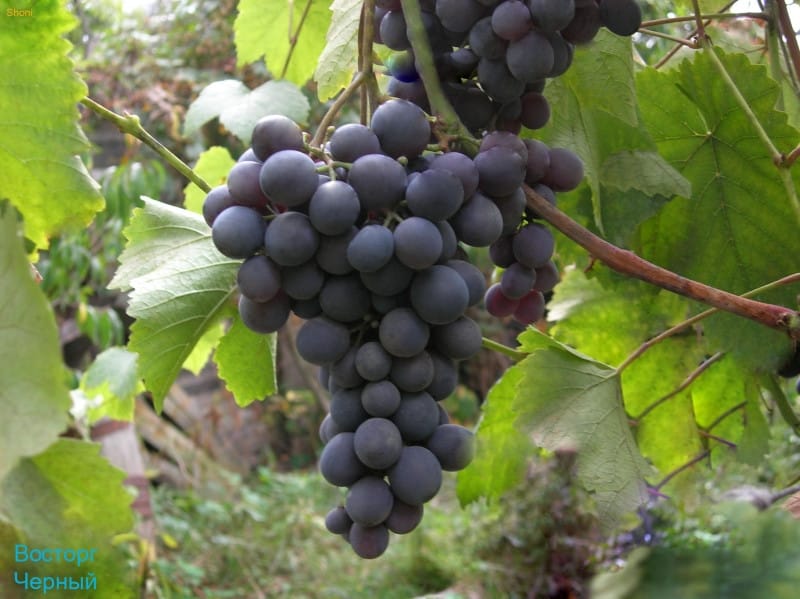
Pros and cons
Description of the grape variety Delight includes the designation of its pros and cons. Advantages that delight winegrowers include:
- stable, high-performance, yield of 12 tons per hectare;
- attractive bunch shape and excellent taste properties of berries;
- excellent rooting and ease of care;
- good resistance to diseases and pests;
- the ability to withstand the effects of low temperatures (up to -25 degrees);
- successful long-distance transportation.
With all the many advantages, this variety has some disadvantages:
- tendency to overload, which is why it needs to ration the crop;
- susceptibility to attacks by phylloxera.
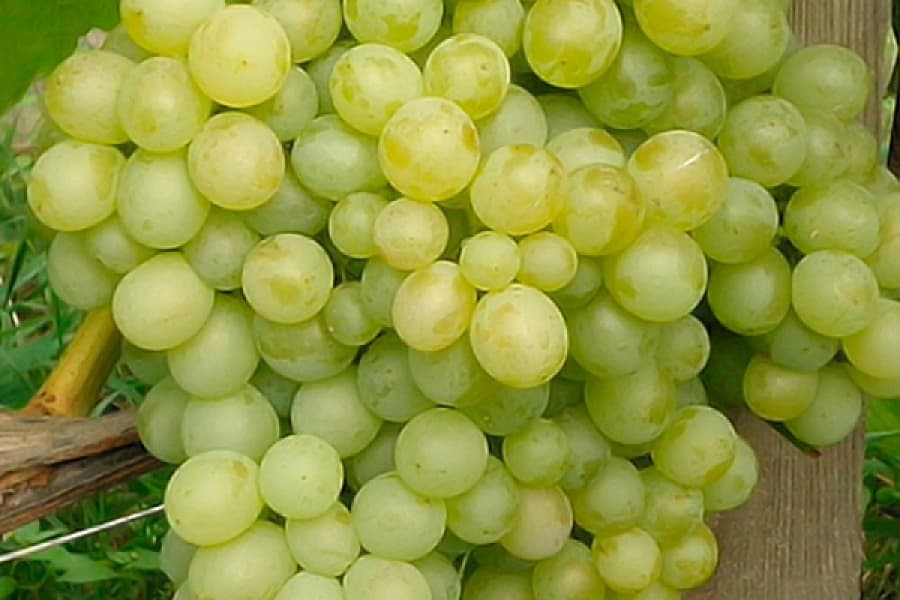
Specifications
The plant forms bushes of medium vigor. The ability of the vine to ripen gives 65-85 percent of the fruitful shoots of their total number. The liana is decorated with leaves painted in light green color and bisexual flowers. Clusters of medium density in the shape of a cone with oval fruits of a white hue, which have a characteristic "tan" on the skin, attract attention. On average, the weight of one berry is 6-7 grams, and the size is 2.7x2.4 centimeters.
The variety is valued for its increased sugar content, which varies from 19 to 25 percent, as well as the acidity level - from 6 to 9 grams per liter. The tasters rated the variety at 8.6 points.
Ripening terms
The Delight grape is an early ripening variety. The culture bears fruit in the third year from the moment of planting, and with good care - in the second. The growing season ranges from 110 to 120 days. Mid-August is harvest time.

Planting and leaving
The optimal time for disembarkation is spring, autumn. When choosing a site, one should take into account both the aesthetic appearance of the site and the needs of the crop for good development and formation of the crop. It is best to plant the seedlings on the south side of the garden. To do this, dig holes, at the bottom of which to organize drainage. Top with minerals or organic substances and sprinkle with fertile substrate. After that, install the support by driving in a peg, and plant the seedlings so that their root collar is located above the soil surface. Tamp and water well.
Care will allow you to achieve stable yields. This requires:
- provide full watering;
- loosen the soil in the near-trunk circles, eliminating weed plants;
- to form bushes in spring and autumn, giving the desired and comfortable shape;
- bring in nutrients so that the grapes grow and bear fruit better;
- carry out "green operations": debris, pinching of growth points, pinching;
- constantly inspect plants for diseases and pests and, if infection is detected, take appropriate measures;
- protect young shrubs from freezing in winter by covering them with materials that allow moisture and air to pass through, thereby providing an optimal microclimate.
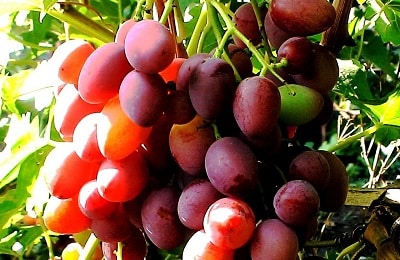
Proper care will have a positive effect on yield growth and development of the vineyard as a whole.
Reproduction methods
To preserve your favorite grape variety, you need to learn how to propagate it correctly. For a novice winegrower, this event will seem a difficult process. But in fact, there are no difficulties, since the culture has excellent growth characteristics.
The culture can be propagated:
- seedlings;
- shoots from an adult fruiting bush;
- grafting the cuttings to the stock of old bushes;
- bones.

Each of these methods is reliable and gives excellent results, which is why it is recommended by experienced winegrowers.
Diseases and pests
The Delight grape variety shows excellent resistance to diseases and pest attacks, but this indicator does not exclude the risk of infection. According to the description, the variety does not resist phylloxera poorly, therefore, for preventive purposes, it is necessary, before flowering, to spray the plants with special preparations, since the infected bush cannot be treated.
Conclusion
Gardeners successfully cultivate the Delight grape, because it fully lives up to its name.The main reasons are the amicable ripening of the crop and the ability to tolerate cold winters well. By giving preference to this variety, you can not only collect a high-quality crop, but also decorate a garden gazebo, arch or hedge with vines in an original way.
